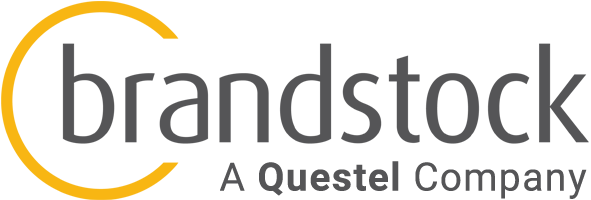5 Easy steps to a cleaner docket in 2016
By Anna Popova and Tiffany Valeriano, IP Recordals Department, Brandstock
…but somehow manage to fall to the bottom of your to-do list in favor of more pressing concerns.
While not quite the same, maybe portfolio clean-up is something like losing weight – there’s no reason to put off until “tomorrow” what you can start today, especially when facing the issue might be easier than you thought! There are already two things working in your favor: one, you’re not alone. Unreliable data quality in the docket is not an exceptional problem; it’s creating headaches for many of your industry colleagues.
The second piece of good news is that you don’t need to suffer through it on your own. There is a solution! Brandstock has helped a number of our clients through similar situations over the years via our online Data Verification platform and data audit experts.
Through the considerable know-how we have gained over the years, we’ve developed a streamlined process of five easy steps to clean up your docket. Let’s get started!
Step 1: Consider your needs and define your priorities.
Before taking any concrete action, it is important to assess where you stand and find your “pain points”. You can start by considering the following questions:
- What are your key territories? Do you have data quality issues in these territories?
- Do you have any problematic countries where you have been facing data quality issues?
- Are your data issues related to a specific brand or portfolio rather than country?
- Did your company acquire or merge portfolios and now some data is uncertain/unreliable/a complete mess?
- Do you have complete, correct goods and services for all of your trademarks?
- Do you have complete information detailing all designations for your international registrations?
- Have you gone through a high volume of changes in the last years?
- Do you undergo any changes in ownership but did not instruct all work in one go, or even not at all?
- Is there a divestiture on the horizon?
- Have you restructured your team/responsibilities?
- What resources will you need to manage your clean-up project? Can you manage this in-house, or do you need help from an external partner?
The answers to these questions will help you establish where and how you need to focus your clean-up efforts.
Step 2: Conduct a data audit
Next, you will want to undertake a data audit, where needed. The audit itself presents two main challenges. The first: budget – do you have a generous budget? Or are you trying to clean up your docket on a shoestring? The second issue is time; data audits are very time-consuming to manage in-house without support.
The solutions to both challenges come through careful planning.
Options:
The ideal method for a data audit is a full data verification with local agents. This will ensure the highest possible quality results, but it is also this the most expensive option. Before undertaking this option, first consider if the state of your data really warrants it; then, if you decide to go forward, be sure to have a template that clearly lists all data types you want to verify, to ensure uniformly formatted results.
The least expensive option is purchasing data from a provider. While this is the least expensive option, the problem here is data quality. This is particularly true for the 100 or so countries where data is not available electronically via online databases. Our experience shows that data quality for audits we have conducted only with “bought data” is only around 60%! Once you have the data, someone who knows what they are looking at will need to review each record, conducting a “sanity check” which can require countless hours of time.
There is a third option: a combined approach, using bought data for some territories (particularly countries with reliable online databases) and local agents for others, based on your own priorities and needs. You may want to instruct in batches based on priority countries or portfolios, to spread costs over multiple quarters. We have worked with one client who instructed their clean up in more than a dozen batches in order to align business needs and budget constraints over time.
It is important to note that before you proceed with any of these options, be sure to export your data with your unique identifier from your IP management system (this will help you with matching later). Also, consider expanding to an Owner Search (in case of uncertainty whether further trademarks are registered that are not on the radar, perhaps filed by the local business without instructions due to an acquisition with possibly incomplete files, incomplete docket due to data migrations or merging of docketing systems, etc.).
Finally, consider if you can manage this project internally, or if your goals would be best served with support from an external partner for all or part of the project.
Step 3: Review and analyze the results of your audit
Conduct a sanity check of the results. This includes a review of verified details, owners, address, IP status, application dates, publication dates, registration/grant dates, next renewal date, classes, etc. What you review is of course to be determined by the data you request to have verified.
Does the data make sense? Are you missing anything? (i.e. the record has a status of registered/granted, but you may still be missing the registration/grant number, etc.)? Are there any owners in there that simply do not make sense (meaning it could be an error in the data provided to you, or perhaps a PTO mistake?) Gaps should be identified and filled/corrected. If you have worked with local agents, ask them questions, if needed. The best thing to do, if possible, is to compare your data with the results of the audit in an IT-based platform so you can easily see data discrepancies or changes – this will speed up immensely your review process.
This sanity check is a critical step – the old adage referring to databases of “junk in, junk out”. Before you define next steps and update your docket, be sure to take the time to review the data resulting from your audit. If you are working with an external partner, they can do this for you.
Step 4: Define next steps
It’s time to decide what needs to happen next, based on your audit.
1. Plan your recordal project.
In case of many ownership and address discrepancies, you may need to plan a recordal project to bring old owners up to date. (For more information, read our paper: “Projects versus Piecemeal?“).
One problem we have seen over the years that has resulted in messy ownership information in IP management systems is not having a unified process across the IP team of updating ownership information pursuant to name changes and assignments. Different people update fields at different times or worst case not at all! If this problem sounds familiar to you, be sure to resolve this and put a process into place to avoid finding yourself in the same situation down the road.
2. Share information.
Be sure you are effectively sharing information; i.e., if you work with a Renewals provider for upcoming renewals and this provider does not conduct a data check in advance of instructing renewals in case of critical discrepancies such as owner names, wrong application/registration numbers status in the upcoming renewal year.
3. Process update.
Do you need to reconsider or optimize any of your SOPs or manual for your IP management system updates? This is particularly important if you have noticed through your analysis of the results that problems could have been avoided if everyone in the team had been working on the same page.
Finally, ask yourself: is there anything else the results trigger for you? Are there other stakeholders who need to receive the results?
Step 5: Docket update
It is now time to update your docket and write back the clean data. For some of you, this is where the real fun begins! Chances are you do not have countless resources at your disposal to get all of this fresh, clean data back into your IP management system. Here are our suggestions for tackling this.
First, clean up your owner/address module. Before you start updating your docket, it is worth taking the time to review and, if needed, clean up (if needed) your owner module. This will help to you minimize duplicates, ensure entries are correct, avoid extra clutter and prevent your newly clean data from becoming a mess! Do you have the same owner name/address a few times, with slight differences? You would be surprised by the result of a thorough review of your owner module! This step also includes adding any new owners resulting from your audit.
For the updates: before resorting to managing updates one by one, consider the alternatives! Is there any way to automate this via IT processes? By batch record updates via your docketing software, either by country or by a unique identifier? For example, imagine you have verified 20,000 records. Performed manually at a healthy rate of 2-3 minutes per record, this would take you more than half a year to update your docket! Through IT processes or bulk updates, you can reduce this drastically to a handful of hours with the right support.
Conclusion
Depending on the size of your portfolio and scope of your needs, before launching into such a project consider if you need to enlist the help of a service provider or law firm to support you. Such projects require significant internal resources to set up and manage, and while the results are inarguably worth it, the pressures of day-to-day business can push data clean-up on the backburner indefinitely. And even if you have a shoestring budget, it is worth consulting with a service provider – with our expertise on large projects and competitive rates, it may still be less expensive for you to work with a partner for your project (it certainly does not hurt to ask!). Plus, our IT support and tools make data audits seamless and as painless as possible.
So don’t put this off any longer – make 2016 the Year of the Clean Docket!
More info? Please contact [email protected].





















